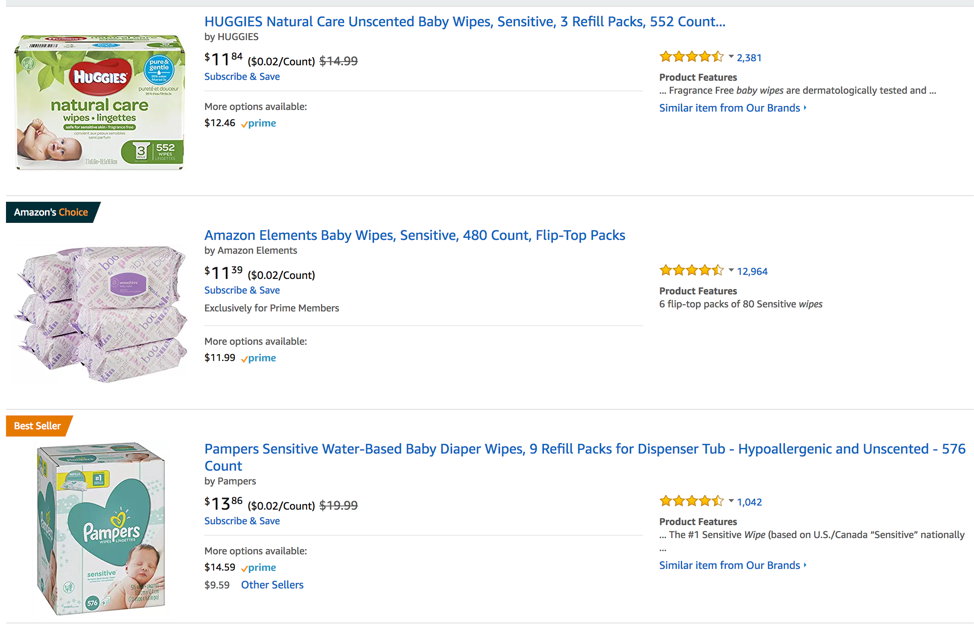(Quick acknowledgement: I learned about the concept of Value Drivers, mentioned in this post, from Dr. Dwight Porter Ph.D of Applied Decision Resources – I’ve been very lucky to be his student over the past 6+ years.)
Back in 2017, with the development of their Amazon Basics Batteries and Baby Wipes, some analysts concluded that Amazon was destined to take over the world. Baby wipes and batteries were the first product categories they chose, but there was nothing to stop them from discounting their way into new categories.
See below for an excerpt from Kleiner Perkins 2017 Internet Trends report.
(Kleiner Perkins 2017 Internet Trends Report – page 75)
Having two children under the age of two, the baby wipes analysis struck a chord with me. Starting with the birth of our first son in 2016, we became regular customers of Amazon’s private label baby wipes. At the time, Amazon was the obvious choice. They offered baby wipes for $0.02 per wipe (and as low as ~$0.01 per wipe if you account for Subscribe and Save and other discounts).
When Amazon introduced their private label product to market, the set of value drivers (things that consumers care about) that defined the baby wipe category was heavily skewed toward cost.
Amazon exploited the fact that baby wipes were a commodity product, drove the price down through the floor, and quickly gained market share. After their market entry, I was sure it was the beginning of the end for some of the pure-play baby brands.
Not going down without a fight, Huggies and Pampers both dropped the price of their baby wipes to compete with Amazon. Amazon set the price for the market at $0.02/wipe and everyone else was forced to match.
(Screenshot taken 8/28, Amazon.com)
But then came a small Irish Company called Irish Breeze and their new-to-the-US offering called WaterWipes.
Positioning as the “World’s Purest baby Wipes” WaterWipes knows one of the secrets to good product management: find a segment of the market that you can manipulate.
WaterWipes was able to peel away a niche (but significant) segment of the baby wipe market and shift what they care about from just price, to (effectively) just “purity” of the product.
As a reward for their savvy product management, WaterWipes currently enjoys a massive 300% premium in the market.
(Screenshot Amazon.com taken 8/28/18)
What I find so interesting about WaterWipes is that it’s actually kind of a preposterous product. As compared to Amazon’s baby wipes, they’re somewhat difficult to get out of the package, they stick together, and the package never really re-seals after you open it. They also claim quite proudly to be “99.9% water” – which makes you think that perhaps you’ve just paid $40 for a bag of wet paper towels that might otherwise have cost $5. However, for parents who are willing to do anything it takes to get the very best products for their kids, they are the leading brand and people are paying their premium price (our family included).
Due to the platform that Amazon has built, it’s looking unlikely that anyone will be able to compete with them on cost, but WaterWipes reminds us that if you design, package, and promote your products in a way that shifts what your customers care about, you don’t have to.


